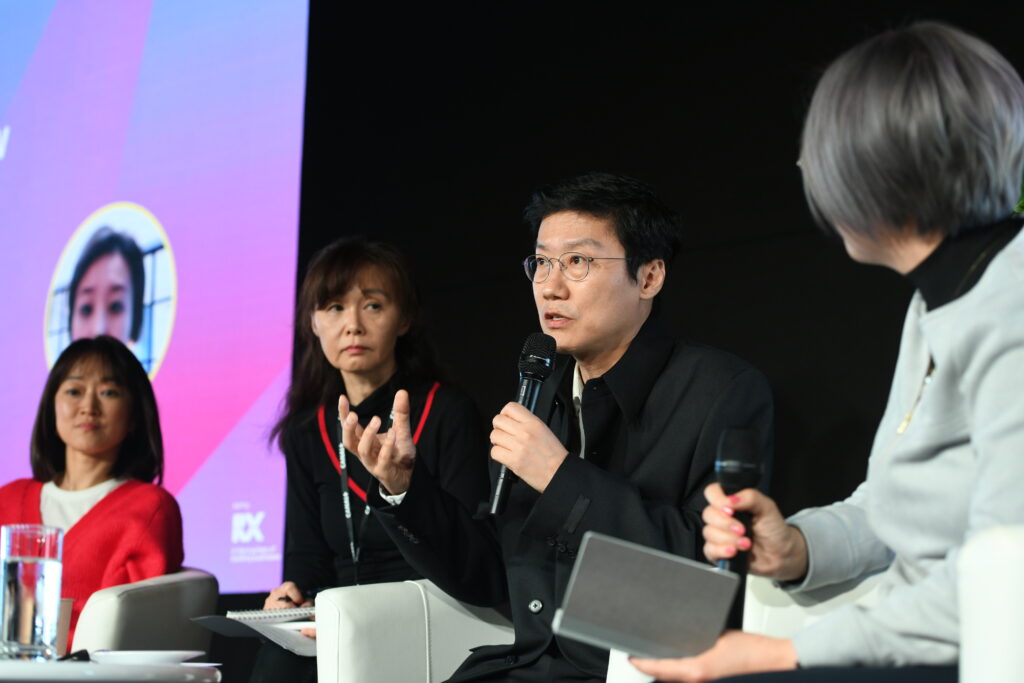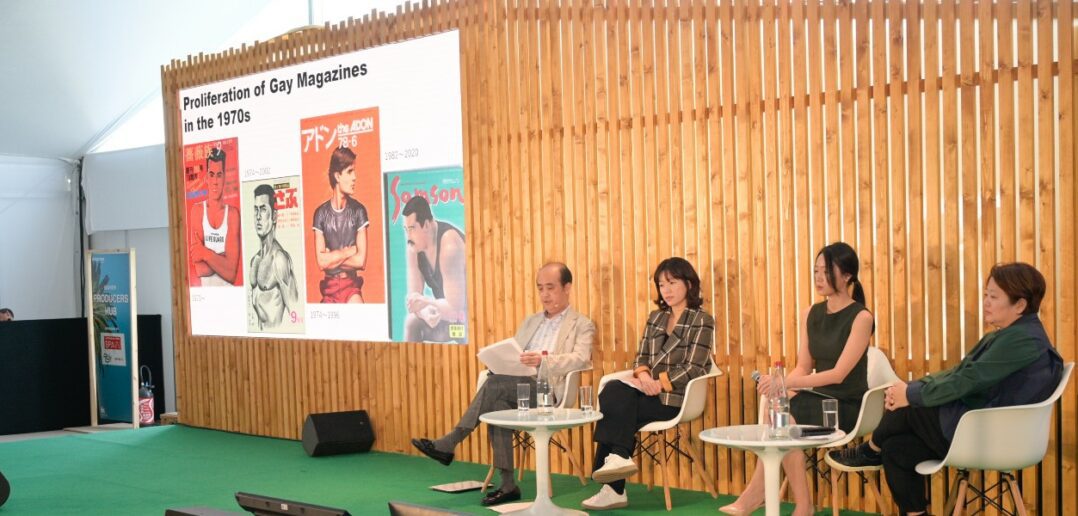South Korea is the world’s testing ground for tech. But also, in terms of entertainment the world is increasingly looking that way since TV sensations like The Masked Singer and Squid Game hit our screens and K-pop groups took over concert stadiums and teenage hearts all over the world. Now, the next big thing coming out of Korea might be synthetic influencers.

Influencers have become an important part of the media eco-system and powerful marketing tools. Especially Gen Z are completely under the Influencer effect. However, as technology continues to evolve, a new kind of influencer has emerged: the synthetic influencer. These digital creations, made entirely of computer-generated imagery (CGI), have the potential to revolutionize the world of media. Let’s explore the rise of the synthetic influencers, their advantages, and disadvantages, and what the future holds for this innovative technology.
Synthetic K-Pop Influencers
One of the biggest players in this field is Kakao Entertainment, a leading entertainment company in Korea with a well-diversified portfolio offering everything from webtoons to films and dramas, talent management, and K-pop all under one roof. Using new imaginative ways to maximize the lifecycle and value of content IPs, Kakao Entertainment delivers a holistic entertainment experience in synergy with its tech-driven ecosystem.
An example for that is Mave, the first artificial K-pop group created entirely within the metaverse. Using machine learning, deep fake, face swap and 3D production technology to bring the group alive.
Synthetic Influencers on TV
Kakao Entertainment is also producing TV shows such as GIRL’S RE:VERSE, a virtual survival show that features 30 female K-pop performers, both current and past, who compete with each other in a virtual world called “W” to have the chance to debut a new virtual K-pop group. Their real identities are hidden with the use of virtual characters so that only their dancing and singing skills, as well as their charms are shown. The program uses VR motion capture technology to capture their physical movements and facial expressions which is then projected onto each contestant’s unique virtual character in real-time. Viewers can guess the identity of the contestants and only those eliminated are allowed to reveal their actual identity. The last five standing make it into the brand-new idol band.
The show premiered in January on South Korean OTT platform Kakao TV and was also shown on Japan’s ABEMA TV platform and USA’s KOCOWA platfom as well as being available worldwide on YouTube.
Another example for these kinds of metaverse shows is a TV reality show called Avatar Singer which is a 15-episode music competition that ran live on Korean TV Channel MBN. It features ten celebrity competitors masked as digital 3D avatars complete with superpowers.
These shows are the next level of The Masked Singer and similar to Fox’s Alter Ego, in which contestants stand backstage while singing and dancing, as motion capture technology projects an avatar on stage that moves when the person does. The judges then decide who has the best performance.
Superplastic and Amazon Studios’ Collaboration
While Korea is way ahead when it comes to synthetic influencers, the trend has also reached the US already. Superplastic is a startup that creates and develops synthetic influencers and has recently raised $20 million led by Amazon’s Alexa Fund. The strategic investment that will see Superplastic and its synthetic celebrities, with millions of followers on social media platforms like TikTok and Instagram, initially collaborating on an animated comedy series with Amazon Studios. They will also work closely with Amazon to look for more ways to connect with younger consumers. The plan is to build out more character-based products – the “Superplastic character universe”, as the startup calls it – across platforms such as games and other social networks. Other investors include Craft Ventures, Google Ventures, Galaxy Digital, Kering, Sony Japan, Scribble Ventures, Kakao, Animoca Brands, Day One Ventures and Betaworks.
Amazon’s interest in Superplastic highlights a recurring theme in tech right now: we’re seeing increasingly blurred lines between media and technology, where one is being leveraged to propagate the other, in today’s digital landscape. Superplastic’s founder and CEO Paul Budnitz sees companies like his as this generation’s Disney: beloved characters with a universe of experiences built around them. In today’s world, that experience, and the beloved characters themselves, inevitably have a major tech component. In regard to Social Media he says: “The usage and momentum on there provides insights about how a piece of content will play with all of our audience. That matters to Amazon.”
Advantages and Disadvantages of Synthetic Influencers
The advantages of using a synthetic influencer over a human influencer are easy to see. Synthetic influencers are entirely computer-generated, which means that the creators have complete control over the character. Especially after the recent Kanye West disaster, a synthetic influencer seems like the safe choice for a brand. Another advantage is that synthetic influencers are always available, 24/7. A lot of human influencers suffer from burnouts eventually, that’s not the case with synthetic influencers. And finally, synthetic influencers can be programmed to speak multiple languages and can be customized to suit different markets and cultures. The “girls” of above-mentioned K-pop group Mave are supposed to converse in, say Portuguese with a Brazilian fan and in German with someone in Germany, fluently and convincingly. This versatility can help brands reach a more diverse audience and expand their reach into new markets.
However, while synthetic influencers offer several advantages, there are also some significant disadvantages that you need to be aware of. The biggest in my opinion is lack of authenticity. Synthetic influencers are not real people, and they don’t have real-life experiences or emotions. This lack of authenticity can make it harder for audiences to connect with them on a personal level, which can reduce their effectiveness as marketing tools. And before anything else, Gen Z is all about authenticity and transparency. Synthetic influencers also lack the creativity and spontaneity of human influencers, which is also very important to Gen Z. This can make their content feel formulaic and less engaging. Some people may also have ethical concerns about using synthetic influencers, particularly if they are not disclosed as being computer-generated. This lack of transparency can be seen as deceitful, and it may damage the brand’s reputation.
Overall, I think we’ll see even more experimentation when it comes to synthetic influencers, especially as we’re moving more and more into the metaverse. For Gen Z, avatars are already playing a huge role in their digital lives.
Top Image: MIPCOM 2022 – Conferences – Boys Love Drama – A new drama sensation, made in Korea and trending troughout Asia.




